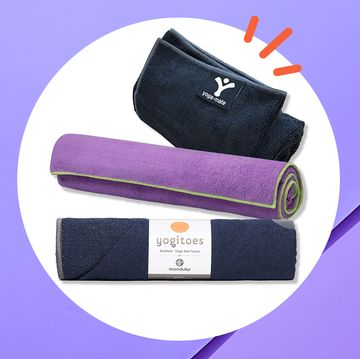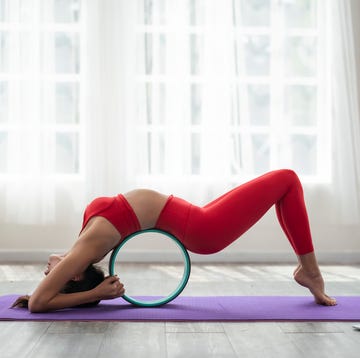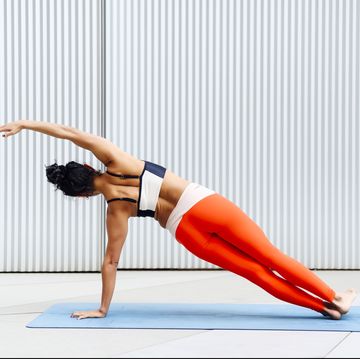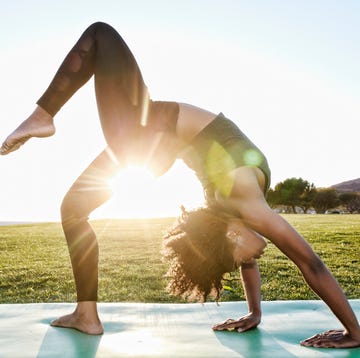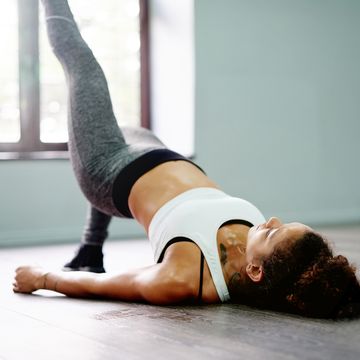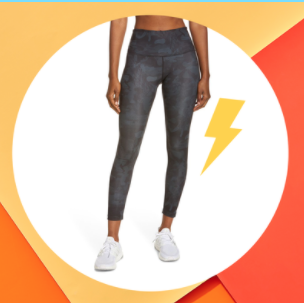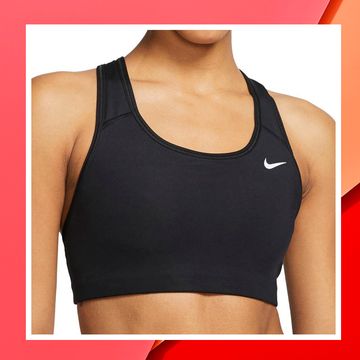The temps may be cooling off outside, but things are heating up inside gyms—literally. Heated fitness classes that crank up the temperature to 85 degrees—or even higher—are trending right now. And it's not just hot yoga, either: There are heated cycling studios like Sweat Shoppe in Los Angeles, a hot TRX suspension training class at Chaise23 in New York City, 95-degree "Barre Burn" classes at Barre Bee Fit studios across the country—and that's just for starters.
So why are people becoming so addicted to sweating profusely? "I think most people assume that when you sweat more, you’re getting a better workout," says John Porcari, Ph.D., program director at the Clinical Exercise Physiology program at University of Wisconsin Lacrosse and executive director of the La Crosse Exercise and Health Program, who has conducted research on the safety of hot yoga. "Plus, people obviously sweat more with these heated workouts, so I think there's a relaxation factor there, too."
Perception vs. Reality
You'll almost certainly feel like your workout is more effective when you're doing it in a hot room—research shows that your perceived level of exertion increases in the heat, says Porcari. But while it might seem like you're working harder, your actual workout intensity is probably suffering; because your body is using so much energy to cool itself off, it becomes much harder to exercise at the same intensity level as you'd be able to normally, says Porcari.
What's more, your heart rate is usually roughly correlated to how many calories you're burning. But since heat elevates your heart rate—again, a result of your body trying to cool itself down—it can no longer be used as a good measure of how effective an exercise is. That doesn't mean that you're not burning more calories at your hot cycling class than you would be at a normal one—but more research is needed to determine if the extra calories you burn because of the heat make up for the lower intensity at which you're exercising because of it, says Porcari.
But Is it Safe?
Porcari's research shows that doing yoga in a room that's 90 to 95 degrees and has a humidity level between 35 to 40 percent is safe—so long as you stay properly hydrated while doing it. But what about workouts done at a higher temperature—or ones that are focused on cardio?
Porcari recommends proceeding with caution: If your core temperature gets too high, you could suffer from heat stroke—and your core temperature is automatically going to be much higher when you're doing cardio than when you're doing yoga. "When you start doing cardio exercise—cycling, running—you’re generating so much body heat because it’s just higher-intensity exercise," says Porcari. "That’s why they have these heat warnings when the heat index is 105 and they say you shouldn’t exercise outside."
Still dying to give a heated class a try? Porcari recommends first checking what the temperature and humidity will be in the room. "If you’re doing a cycling class and it’s 95 degrees, I’d be very, very cautious," says Porcari. "Think of going out and riding for 45 minutes to an hour on a 95-degree day at very high intensity." That's basically what you'll be doing—but indoors. The humidity should also be pretty low in the room since the higher the humidity level, the harder it is for your body to dissipate heat.
You'll want to make sure to wear loose-fitting, breathable clothing (which will be less likely to trap in heat) and to drink plenty of (preferably cold) water. You should be sipping at least once every 10 to 15 minutes, even if you don't feel thirsty, says Porcari. "By time you’re thirsty, you’re already starting to dehydrate—so thirst in and of itself isn’t a good indicator of hydration."
The Newest Take on Indoor Cycling
5 Tips for Running in the Heat
Must-Have Workout Gear to Stay Cool in Hot Weather
Robin Hilmantel is the digital director at Women's Health, where she oversees the editorial strategy for WomensHealthMag.com and its social platforms. She has almost 10 years of experience writing and editing for national publications, and more than 8 years of experience writing and editing health, fitness, and nutrition content specifically. In addition to Women's Health, her work has also appeared in TIME, Food Network Magazine, Cosmopolitan, New York Magazine, SELF, Glamour.com and other publications.



